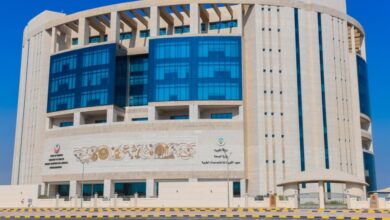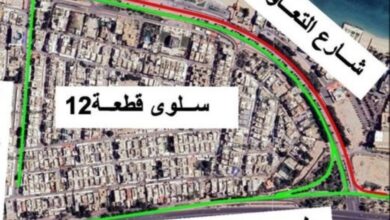The 37 years evolution of Kuwait’s public debt

The “Public Debt” project was initially submitted by the government to the National Assembly in August 2017 but faced significant criticism. The main concerns centered around the proposal to raise the borrowing ceiling to 25 billion dinars and its primary focus on covering the budget deficit rather than investing in capital projects. As a result, the government withdrew the proposal and introduced a revised version in April 2020. The updated plan reduced the borrowing ceiling to 20 billion dinars, with 8 billion allocated to covering the budget deficit and 12 billion designated for capital projects.
To ease the burden of borrowing, most countries stagger debt maturities across different years, ensuring that repayments are more manageable over time. The true cost of borrowing lies in debt service, which governments strive to minimize, as it constitutes a recurring financial obligation that can strain public finances.
Regarding the ability of local banks to meet the state’s financing needs, the Central Bank clarified in its 2020 statement to the National Assembly that while local banks had previously lent to the government to cover expenses, such lending must be approached with caution. The Central Bank emphasized the need to avoid crowding out the private sector, as banks are primarily established to support private sector financing rather than serve as a primary source of government funding.
Additionally, the law serves as a key monetary policy tool that allows the Ministry of Finance to manage liquidity effectively. However, since the expiration of the previous law, this tool has been rendered inactive, limiting the government’s ability to address liquidity challenges.
In 2020, the Public Investment Authority emphasized the importance of approving the law, given its role in managing the state’s reserves. These reserves include the Future Generations Reserve, which—by law—cannot be withdrawn from, and the General Reserve, which is used to cover the budget deficit and other financial obligations outside the budget. These obligations include the actuarial deficit of insurance, Kuwait Airways’ losses, and the armament budget.
The Authority highlighted that due to the decline in oil prices, withdrawals from the General Reserve had increased significantly. At the start of the fiscal year, the reserve held 5 billion dinars, but within just 100 days, it had fallen to less than 1 billion dinars—a decrease of 4 billion. If this trend continued, the government would struggle to meet its financial obligations, including salaries and other expenses, by August or September. The Authority also emphasized that borrowing from local or international banks at that time was more cost-effective than withdrawing from the Future Generations Reserve or liquidating state assets.
Audit Bureau
In a 2020 statement, the Audit Bureau emphasized that given the worsening deficit and the decline in state revenues—over 90% of which rely on oil—the government had no choice but to seek alternative financial resources, including borrowing. However, it stressed that borrowing should be regulated and accompanied by a comprehensive package of financial, economic, and legislative reforms to ensure fiscal sustainability.
According to a previous report by the Finance Committee of the National Assembly, the history of public debt laws in Kuwait dates back to Decree Law No. 50 of 1987. The first issuance of treasury bills and bonds took place in the mid-1980s when the country faced a budget deficit and a sharp decline in oil revenues. Since Article 136 of the Constitution stipulates that “public loans shall be concluded by law,” Decree Law No. 50 of 1987 was enacted, granting the government the authority to secure public loans. The law permitted borrowing for up to 10 years from the date of issuance, with a maximum loan limit of 1.4 billion dinars. This marked the beginning of Kuwait’s bond market and public debt history.
As the country’s financial situation worsened, the government was compelled to issue Decree Law No. 13 of 1989, which increased the maximum borrowing limit to 1 billion dinars.
Following the brutal Iraqi invasion and the massive financial burdens it imposed, the government had to resort to public borrowing to secure the necessary funds for covering these extraordinary expenses. This required increasing the borrowing ceiling set by Decree Law No. 50 of 1987, as amended by Decree Law No. 13 of 1989. Consequently, Decree Law No. 7 of 1991 was issued, raising the maximum public loan limit to 10 billion dinars. For the first time, the law also permitted the government to borrow from international markets and in foreign currencies.
With the onset of the global financial crisis in 2009, the government issued Decree Law No. 3 of 2009, extending the borrowing period by 20 years from the expiration of the previous term. The law also introduced “Islamic bonds (Sukuk)” as a new borrowing instrument. However, the absence of a dedicated law regulating government bonds prevented the effective use of this tool.
Financing Operations
On April 10, 2017, the borrowing period established by Decree Law No. 50 of 1987 and its amendments expired. In response, the government proposed a new draft law to authorize public loans and financing operations, aiming to extend the borrowing period and increase the debt ceiling. The proposal was referred to the Finance and Economic Committee on August 23, 2017.
However, due to disagreements between the government and the National Assembly, and in light of strong criticism, the government issued Decree No. 68 of 2020 to withdraw the draft law. Subsequently, a revised version was submitted, addressing concerns raised by representatives and economic experts. The new draft placed greater emphasis on directing borrowed funds toward capital spending rather than solely covering budget deficits.
Before withdrawing the public debt proposal, the government justified its importance by highlighting the persistent deficits in the state budget, which had necessitated various borrowing and financing operations. It warned that without the law’s approval, the General Reserve would be the only source available to cover these deficits, ultimately leading to its depletion—a scenario that eventually materialized.
Observers emphasize the need to grant the government and the Ministry of Finance greater flexibility in addressing the general budget deficit by approving the public debt law. This would prevent disruptions to the monetary policy of the Central Bank. However, they also stress the importance of capping public debt as a percentage of Gross Domestic Product to ensure it remains within sustainable limits.
At the same time, capital expenditures outlined in the project should not be allocated to road maintenance or the construction of government buildings, as these are not considered true capital expenditures since they do not generate direct or indirect returns for the general budget. Instead, funds should be directed toward productive projects that create job opportunities and contribute to economic growth.
In addition, the approval of the public debt law should be accompanied by a clear plan for economic reforms and diversifying general budget revenues. The government must clarify the capital projects included in the budget, their expected returns, and efforts to enhance administrative efficiency by rationalizing spending, controlling current expenditures, and eliminating waste. There should also be coordination between the Ministry of Finance and entities with independent budgets to ensure retained earnings are properly allocated. Furthermore, sufficient disclosures and transparency are essential in defining the distribution of responsibilities among the entities managing public debt.
On the other hand, the Finance Committee had previously warned about the risks of falling into a debt trap. The greatest danger posed by this law is that the state may resort to borrowing year after year, especially if new loans are used to repay accumulated debts without implementing structural economic reforms. This could lead to an unsustainable increase in public debt, ultimately making it difficult for the government to meet its obligations to creditors.
50 Years
Bloomberg had previously reported, citing informed sources, that Kuwait may pass a new public debt law allowing it to raise 20 billion dinars through debt instruments over a 50-year period. The anticipated law would enable the country to issue debt instruments for the first time in eight years.
The Al-Shall Economic Center report last week emphasized that while there is no disagreement on the necessity of public debt as a financial policy tool, its risks remain significant if public spending efficiency continues to be weak. The report warned that repeating past mistakes, such as borrowing from global markets in 2017 without addressing inefficiencies, could be detrimental. It stressed that the law should only be passed after curbing corruption and waste in public spending and should be part of a well-structured expenditure plan with clear goals and a defined timeline to enhance efficiency. Otherwise, it risks adding another challenge—falling into the trap of foreign debt—on top of existing issues of unsustainability and inefficiency.
Despite differing views on the formula and timing of its enactment, economic experts strongly support the need for a new public debt law to provide the Ministry of Finance with greater flexibility in managing liquidity. However, there is broad consensus that the majority of borrowed funds should be directed toward capital spending. Additionally, many emphasize that the law must be accompanied by a comprehensive economic reform plan to ensure that borrowing serves as a strategic tool for progress rather than a pathway to a debt trap.
Project 2020 was the closest to approval and included public loan methods.
In May 2020, the government submitted a draft law to the National Assembly authorizing it to secure public loans and conduct financing operations from both local and international financial markets. This was the most recent of several proposals and came closest to approval, as it incorporated some of the Assembly’s previous concerns and recommendations.
At the time, the government justified the need for the public debt project with several key reasons outlined in the explanatory memorandum for the 2020 proposal. It stated: “The present draft law was designed to be a comprehensive framework authorizing the government to conclude public loans and financing operations from both local and international financial markets, with implementation beginning upon its publication in the Official Gazette. Given the financial and monetary factors necessitating continued borrowing and financing, it was determined that the authorization to conclude public loans and financing operations should span twenty years from the date the law is enacted. The repayment term for financing amounts was set at a maximum of thirty years from the date the loan contract or financing operation is concluded, providing greater flexibility and diversity in the terms of issuing financing instruments”.
On the other hand, in light of the current economic situation, the growth of the economy, and the increasing size of the general budget, it is necessary to raise the public loan and financing to meet the state’s needs at this stage. As a result, it was decided to increase the maximum amount of public loans and financing operations that the government is authorized to obtain to 20 billion dinars, or its equivalent in major convertible foreign currencies, provided that the total does not exceed 60% of the annual nominal gross domestic product. This amount is divided into two parts: the first is 8 billion dinars, allocated to finance the budget deficit, and the second is 12 billion dinars, which is conditional on the value of capital projects registered in the budget. The funds from this second part are exclusively reserved for these projects and are tied to the approval of the National Assembly of the state’s general budget.
To ensure that the law encompasses all methods and tools for public loans and financing operations, the text was framed in general terms. It specifies that this should be carried out through the established methods and tools recognized in both local and international markets. This includes traditional public loan and financing methods, such as direct borrowing from financial institutions and the issuance of treasury bills and bonds, as well as Islamic financing methods and tools, such as sukuk, tawarruq operations, and others.
Source: Al Jarida













